 In the last blog post, As UK inflation rises, so real wages begin to fall, we showed how the rise in inflation following the Brexit vote is causing real wages in the UK to fall once more, after a few months of modest rises, which were largely due to very low price inflation. But how does this compare with other OECD countries?
In the last blog post, As UK inflation rises, so real wages begin to fall, we showed how the rise in inflation following the Brexit vote is causing real wages in the UK to fall once more, after a few months of modest rises, which were largely due to very low price inflation. But how does this compare with other OECD countries?
In an article by Rui Costa and Stephen Machin from the LSE, the authors show how, from the start of the financial crisis in 2007 to 2015 (the latest year for which figures are available), real hourly wages fell further in the UK than in all the other 27 OECD countries, except Greece (see the chart below, which is Figure 5 from their article). 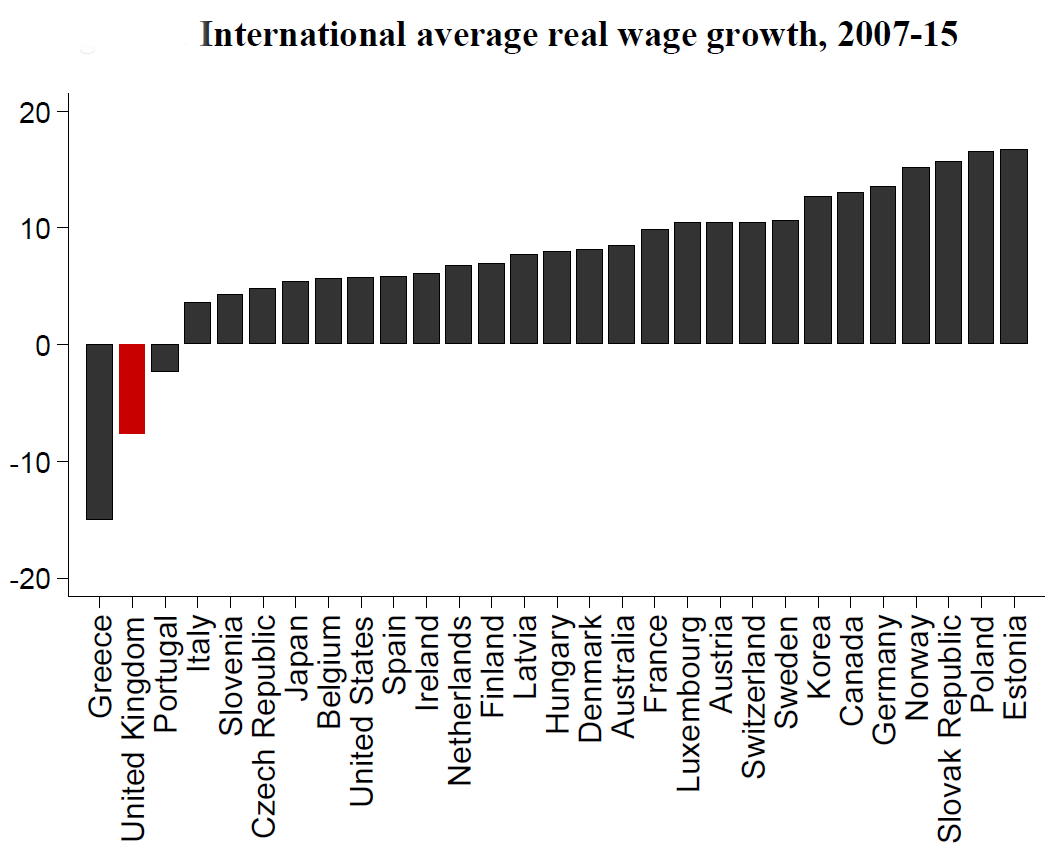 Indeed, only in Greece, the UK and Portugal were real wages lower in 2015 than in 2007.
Indeed, only in Greece, the UK and Portugal were real wages lower in 2015 than in 2007.
The authors examine a number of aspects of real wages in the UK, including the rise in self employment, differences by age and sex, and for different percentiles in the income distribution. They also look at how family incomes have suffered less than real wages, thanks to the tax and benefit system.
The authors also look at what the different political parties have been saying about the issues during their election campaigns and what they plan to do to address the problem of falling, or only slowly rising, real wages.
Articles
Real Wages and Living Standards in the UK LSE – Centre for Economic Performance, Rui Costa and Stephen Machin (May 2017)
The Return of Falling Real Wages LSE – Centre for Economic Performance, David Blanchflower, Rui Costa and Stephen Machin (May 2017)
The chart that shows UK workers have had the worst wage performance in the OECD except Greece Independent, Ben Chu (5/6/17)
Data
Earnings and working hours ONS
OECD.Stat OECD
International comparisons of productivity ONS
Questions
- Why have real wages fallen more in the UK than in all OECD countries except Greece?
- Which groups have seen the biggest fall in real wages? Explain why.
- What policies are proposed by the different parties for raising real wages (a) generally; (b) for the poorest workers?
- How has UK productivity growth compared with that in other developed countries? What explanations can you offer?
- What is the relationship between productivity growth and the growth in real wages?
 According to the theory of the political business cycle, governments call elections at the point in the business cycle that gives them the greatest likelihood of winning. This is normally near the peak of the cycle, when the economic news is currently good but likely to get worse in the medium term. With fixed-term governments, this makes it harder for governments as, unless they are lucky, they have to use demand management policies to engineer a boom as an election approaches. It is much easier if they can choose when to call an election.
According to the theory of the political business cycle, governments call elections at the point in the business cycle that gives them the greatest likelihood of winning. This is normally near the peak of the cycle, when the economic news is currently good but likely to get worse in the medium term. With fixed-term governments, this makes it harder for governments as, unless they are lucky, they have to use demand management policies to engineer a boom as an election approaches. It is much easier if they can choose when to call an election.
In the UK, under the Fixed-term Parliaments Act of 2011, the next election must be five years after the previous one. This means that the next election in the UK must be the first Thursday in May 2020. The only exception is if at least two-thirds of all MPs vote for a motion ‘That there shall be an early parliamentary general election’ or ‘That this House has no confidence in Her Majesty’s Government.’
The former motion was put in the House of Commons on 19 April and was carried by 522 votes to 13 – considerably more than two-thirds of the 650 seats in Parliament. The next election will therefore take place on the government’s chosen date of 8 June 2017.
Part of the reason for the government calling an election is to give it a stronger mandate for its Brexit negotiations. Part is to take advantage of its currently strong opinion poll ratings, which, if correct, will mean that it will gain a substantially larger majority. But part could be to take advantage of the current state of the business cycle.
Although the economy is currently growing quite strongly (1.9% in 2016) and although forecasts for economic growth this year are around 2%, buoyed partly by a strongly growing world economy, beyond that things look less good. Indeed, there are a number of headwinds facing the economy.
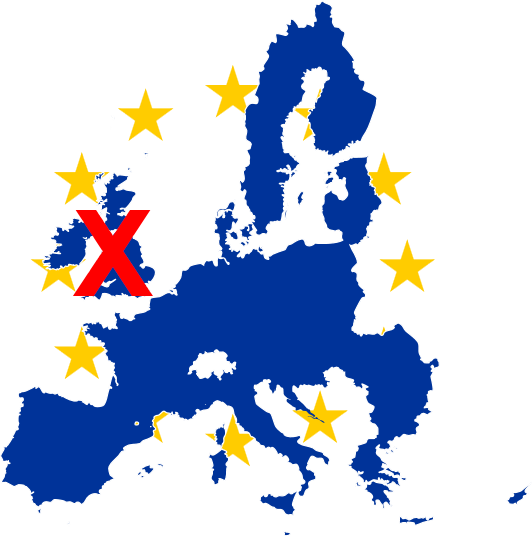 First there are the Brexit negotiations, which are likely to prove long and difficult and could damage confidence in the economy. There may be adverse effects on both inward and domestic investment and possible increased capital outflows. At the press conference to the Bank of England’s February 2017 Inflation Report, the governor stated that “investment is expected to be around a quarter lower in three years’ time than projected prior to the referendum, with material consequences for productivity, wages and incomes”.
First there are the Brexit negotiations, which are likely to prove long and difficult and could damage confidence in the economy. There may be adverse effects on both inward and domestic investment and possible increased capital outflows. At the press conference to the Bank of England’s February 2017 Inflation Report, the governor stated that “investment is expected to be around a quarter lower in three years’ time than projected prior to the referendum, with material consequences for productivity, wages and incomes”.
Second, the fall in the sterling exchange rate is putting upward pressure on inflation. The Bank of England forecasts that CPI inflation will peak at around 2.8% in early 2018. With nominal real wages lagging behind prices, real wages are falling and will continue to do so. As well as from putting downward pressure on living standards, it will tend to reduce consumption and the rate of economic growth.
 Consumer debt has been rising rapidly in recent months, with credit-card debt reaching an 11-year high in February. This has helped to support growth. However, with falling real incomes, a lack of confidence may encourage people to cut back on new borrowing and hence on spending. What is more, concerns about the unsustainability of some consumer debt has encouraged the FCA (the financial sector regulator) to review the whole consumer credit industry. In addition, many banks are tightening up on their criteria for granting credit.
Consumer debt has been rising rapidly in recent months, with credit-card debt reaching an 11-year high in February. This has helped to support growth. However, with falling real incomes, a lack of confidence may encourage people to cut back on new borrowing and hence on spending. What is more, concerns about the unsustainability of some consumer debt has encouraged the FCA (the financial sector regulator) to review the whole consumer credit industry. In addition, many banks are tightening up on their criteria for granting credit.
Retail spending, although rising in February itself, fell in the three months to February – the largest fall for nearly seven years. Such falls are likely to continue.
So if the current boom in the economy will soon end, then, according to political business cycle theory, the government is right to have called a snap election.
Articles
Gloomy economic outlook is why Theresa May was forced to call a snap election The Conversation, Richard Murphy (18/4/17)
What does Theresa May’s general election U-turn mean for the economy? Independent, Ben Chu (18/4/17)
It’s not the economy, stupid – is it? BBC News Scotland, Douglas Fraser (18/4/17)
Biggest fall in UK retail sales in seven years BBC News (21/4/17)
Sharp drop in UK retail sales blamed on higher prices Financial Times, Gavin Jackson (21/4/17)
Shoppers cut back as inflation kicks in – and top Bank of England official says it will get worse The Telegraph, Tim Wallace Szu Ping Chan (21/4/17)
Retail sales volumes fall at fastest quarterly rate in seven years Independent, Ben Chu (21/4/17)
Statistical Bulletin
Retail sales in Great Britain: Mar 2017 ONS (21/4/17)
Questions
- For what reasons might economic growth in the UK slow over the next two to three years?
- For what reasons might economic growth increase over the next two to three years?
- Why is forecasting UK economic growth particularly difficult at the present time?
- What does political business cycle theory predict about the behaviour of governments (a) with fixed terms between elections; (b) if they can choose when to call an election?
- How well timed is the government’s decision to call an election?
- If retail sales are falling, what other element(s) of aggregate demand may support economic growth in the coming months?
- How does UK productivity compare with that in other developed countries? Explain why.
- What possible trading arrangements with the EU could the UK have in a post-Brexit deal? Discuss their likelihood and their impact on economic growth?
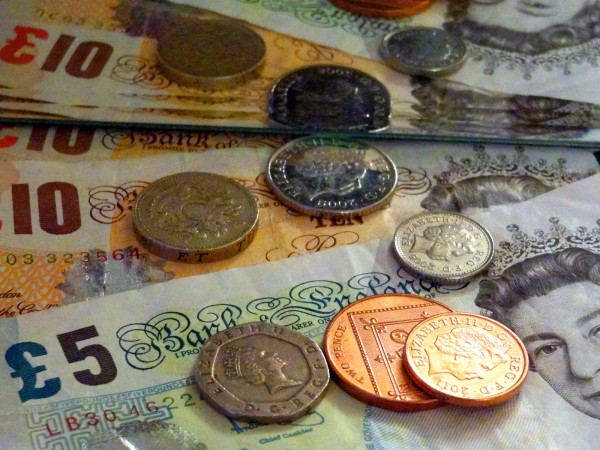 The latest figures from the ONS show that UK inflation rose to 2.3% for the 12 months to February 2017 – up from 1.9% for the 12 months to January. The rate is the highest since September 2013 and has steadily increased since late 2015.
The latest figures from the ONS show that UK inflation rose to 2.3% for the 12 months to February 2017 – up from 1.9% for the 12 months to January. The rate is the highest since September 2013 and has steadily increased since late 2015.
The main price index used to measure inflation is now CPIH, as opposed to CPI. CPIH is the consumer prices index (CPI) adjusted for housing costs and is thus a more realsitic measure of the cost pressures facing households. As the ONS states:
CPIH extends the consumer prices index (CPI) to include a measure of the costs associated with owning, maintaining and living in one’s own home, known as owner occupiers’ housing costs (OOH), along with Council Tax. Both of these are significant expenses for many households and are not included in the CPI.
But why has inflation risen so significantly? There are a number of reasons.
 The first is a rise in transport costs (contributing 0.15 percentage points to the overall inflation rate increase of 0.4 percentage points). Fuel prices rose especially rapidly, reflecting both the rise in the dollar price of oil and the depreciation of the pound. In February 2016 the oil price was $32.18; in February 2017 it was $54.87 – a rise of 70.5%. In February 2016 the exchange rate was £1 = $1.43; in February 2017 it was £1 = $1.25 – a depreciation of 12.6%.
The first is a rise in transport costs (contributing 0.15 percentage points to the overall inflation rate increase of 0.4 percentage points). Fuel prices rose especially rapidly, reflecting both the rise in the dollar price of oil and the depreciation of the pound. In February 2016 the oil price was $32.18; in February 2017 it was $54.87 – a rise of 70.5%. In February 2016 the exchange rate was £1 = $1.43; in February 2017 it was £1 = $1.25 – a depreciation of 12.6%.
The second biggest contributor to the rise in inflation was recreation and culture (contributing 0.08 percentage points). A wide range of items in this sector, including both goods and services, rose in price. ‘Notably, the price of personal computers (including laptops and tablets) increased by 2.3% between January 2017 and February 2017.’ Again, a large contributing factor has been the fall in the value of the pound. Apple, for example, raised its UK app store prices by a quarter in January, having raised prices for iPhones, iPads and Mac computers significantly last autumn. Microsoft has raised its prices by more than 20% this year for software services such as Office and Azure. Dell, HP and Tesla have also significantly raised their prices.
The third biggest was food and non-alcoholic beverages (contributing 0.06 percentage points). ‘Food prices, overall, rose by 0.8% between January 2017 and February 2017, compared with a smaller rise of 0.1% a year earlier.’ Part of the reason has been the fall in the pound, but part has been poor harvests in southern Europe putting up euro prices. This is the first time that overall food prices have risen for more than two-and-a-half years.
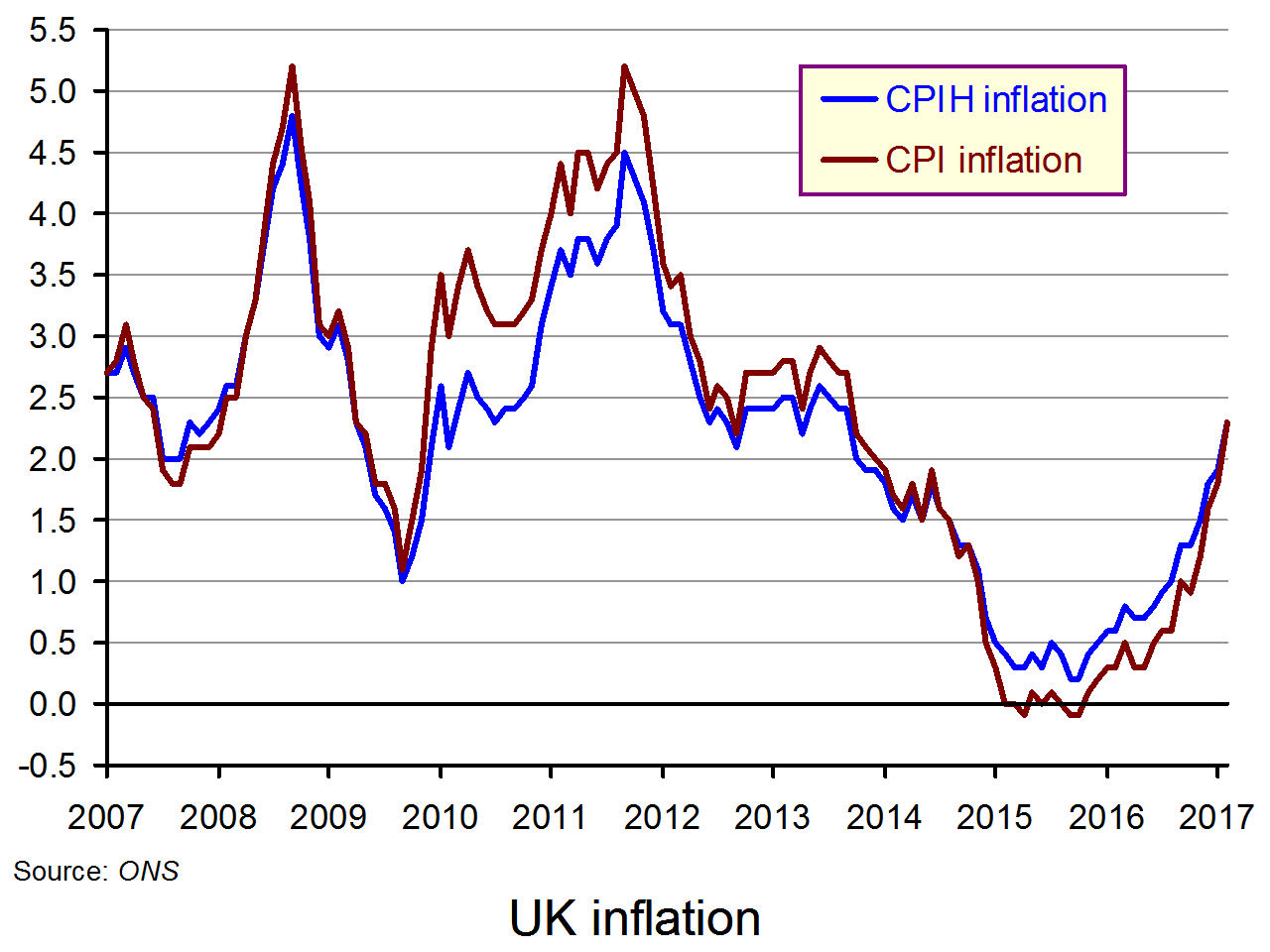 It is expected that inflation will continue to rise over the coming months as the effect of the weaker pound and higher raw material and food prices filter though. The current set of pressures could see inflation peaking at around 3%. If there is a futher fall in the pound or further international price increases, inflation could be pushed higher still – well above the Bank of England’s 2% target. (Click here for a PowerPoint of the chart.)
It is expected that inflation will continue to rise over the coming months as the effect of the weaker pound and higher raw material and food prices filter though. The current set of pressures could see inflation peaking at around 3%. If there is a futher fall in the pound or further international price increases, inflation could be pushed higher still – well above the Bank of England’s 2% target. (Click here for a PowerPoint of the chart.)
The higher inflation means that firms are facing a squeeze on their profits from two directions.
First, wage rises have been slowing and are now on a level with consumer price rises. It is likely that wage rises will soon drop below price rises, meaning that real wages will fall, putting downward pressure on spending and squeezing firms’ revenue.
Second, input prices are rising faster than consumer prices. In the 12 months to February 2017, input prices (materials and fuels) rose by 19.1%, putting a squeeze on producers. Producer prices (‘factory gate prices’), by contrast, rose by 3.7%. Even though input prices are only part of the costs of production, the much smaller rise of 3.7% reflects the fact that producer’s margins have been squeezed. Retailers too are facing upward pressure on costs from this 3.7% rise in the prices of products they buy from producers.
One of the worries about the squeeze on real wages and the squeeze on profits is that this could dampen investment and slow both actual and potential growth.
 So will the Bank of England respond by raising interest rates? The answer is probably no – at least not for a few months. The reason is that the higher inflation is not the result of excess demand and the economy ‘overheating’. In other words, the higher inflation is not from demand-pull pressures. Instead, it is from higher costs, which are in themselves likely to dampen demand and contribute to a slowdown. Raising interest rates would cause the economy to slow further.
So will the Bank of England respond by raising interest rates? The answer is probably no – at least not for a few months. The reason is that the higher inflation is not the result of excess demand and the economy ‘overheating’. In other words, the higher inflation is not from demand-pull pressures. Instead, it is from higher costs, which are in themselves likely to dampen demand and contribute to a slowdown. Raising interest rates would cause the economy to slow further.
Videos
 UK inflation shoots above two percent, adding to Bank of England conundrum Reuters, William Schomberg, David Milliken and Richard Hunter (21/3/17)
UK inflation shoots above two percent, adding to Bank of England conundrum Reuters, William Schomberg, David Milliken and Richard Hunter (21/3/17)
 Bank target exceeded as inflation rate rises to 2.3% ITV News, Chris Choi (21/3/17)
Bank target exceeded as inflation rate rises to 2.3% ITV News, Chris Choi (21/3/17)
 Steep rise in inflation Channel 4 News, Siobhan Kennedy (21/3/17)
Steep rise in inflation Channel 4 News, Siobhan Kennedy (21/3/17)
 U.K. Inflation Gains More Than Forecast, Breaching BOE Goal Bloomberg, Dan Hanson and Fergal O’Brien (21/3/17)
U.K. Inflation Gains More Than Forecast, Breaching BOE Goal Bloomberg, Dan Hanson and Fergal O’Brien (21/3/17)
Articles
Inflation leaps in February raising prospect of interest rate rise The Telegraph, Julia Bradshaw (21/3/17)
Brexit latest: Inflation jumps to 2.3 per cent in February Independent, Ben Chu (21/3/17)
UK inflation rate leaps to 2.3% BBC News (21/3/17)
UK inflation: does it matter for your income, debts and savings? Financial Times, Chris Giles (21/3/17)
Rising food and fuel prices hoist UK inflation rate to 2.3% The Guardian, Katie Allen (21/3/17)
Reality Check: What’s this new measure of inflation? BBC News (21/3/17)
Data
UK consumer price inflation: Feb 2017 ONS Statistical Bulletin (21/3/17)
UK producer price inflation: Feb 2017 ONS Statistical Bulletin (21/3/17)
Inflation and price indices ONS datasets
Consumer Price Inflation time series dataset ONS datasets
Producer Price Index time series dataset ONS datasets
European Brent Spot Price US Energy Information Administration
Statistical Interactive Database – interest & exchange rates data Bank of England
Questions
- If pries rise by 10% and then stay at the higher level, what will happen to inflation (a) over the next 12 months; (b) in 13 months’ time?
- Distinguish between demand-pull and cost-push inflation. Why are they associated with different effects on output?
- If producers face rising costs, what determines their ability to pass them on to retailers?
- Why is the rate of real-wage increase falling, and why may it beome negative over the coming months?
- What categories of people are likely to lose the most from inflation?
- What is the Bank of England’s remit in terms of setting interest rates?
- What is likely to affect the sterling exchange rate over the coming months?
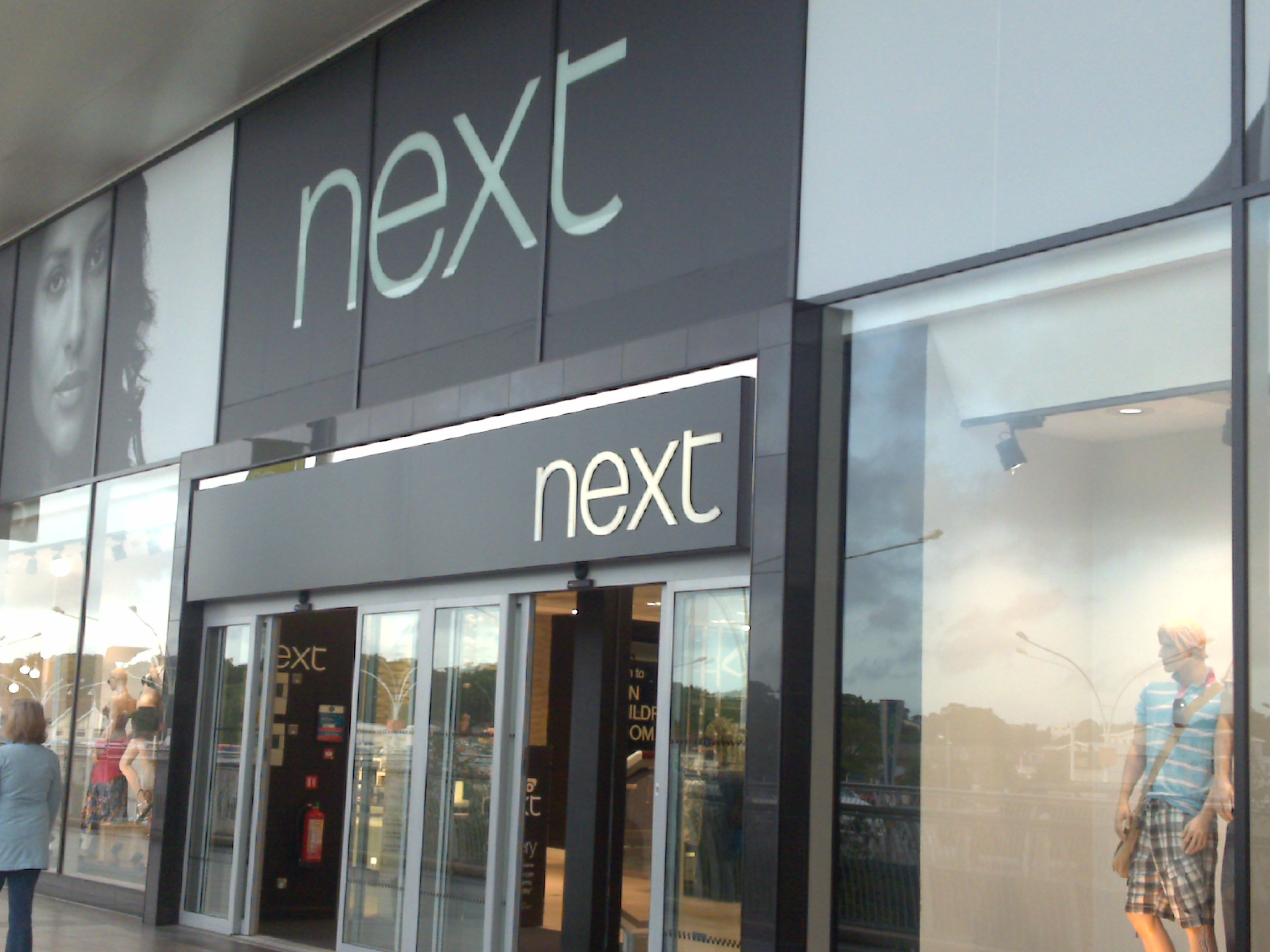 The economic climate remains uncertain and, as we enter 2017, we look towards a new President in the USA, challenging negotiations in the EU and continuing troubles for High Street stores. One such example is Next, a High Street retailer that has recently seen a significant fall in share price.
The economic climate remains uncertain and, as we enter 2017, we look towards a new President in the USA, challenging negotiations in the EU and continuing troubles for High Street stores. One such example is Next, a High Street retailer that has recently seen a significant fall in share price.
Prices of clothing and footwear increased in December for the first time in two years, according to the British Retail Consortium, and Next is just one company that will suffer from these pressures. This retail chain is well established, with over 500 stores in the UK and Eire. It has embraced the internet, launching its online shopping in 1999 and it trades with customers in over 70 countries. However, despite all of the positive actions, Next has seen its share price fall by nearly 12% and is forecasting profits in 2017 to be hit, with a lack of growth in earnings reducing consumer spending and thus hitting sales.
The sales trends for Next are reminiscent of many other stores, with in-store sales falling and online sales rising. In the days leading up to Christmas, in-store sales fell by 3.5%, while online sales increased by over 5%. However, this is not the only trend that this latest data suggests. It also indicates that consumer spending on clothing and footwear is falling, with consumers instead spending more money on technology and other forms of entertainment. Kirsty McGregor from Drapers magazine said:
“I think what we’re seeing there is an underlying move away from spending so much money on clothing and footwear. People seem to be spending more money on going out and on technology, things like that.”
Furthermore, with price inflation expected to rise in 2017, and possibly above wage inflation, spending power is likely to be hit and it is spending on those more luxury items that will be cut. With Next’s share price falling, the retail sector overall was also hit, with other companies seeing their share prices fall as well, although some, such as B&M, bucked the trend. However, the problems facing Next are similar to those facing other stores.
But for Next there is more bad news. It appears that the retail chain has simply been underperforming for some time. We have seen other stores facing similar issues, such as BHS and Marks & Spencer. Neil Wilson from ETX Capital said:
“The simple problem is that Next is underperforming the market … UK retail sales have held up in the months following the Brexit vote but Next has suffered. It’s been suffering for a while and needs a turnaround plan … The brand is struggling for relevancy, and risks going the way of Marks & Spencer on the clothing front, appealing to an ever-narrower customer base.”
Brand identity and targeting customers are becoming ever more important in a highly competitive High Street that is facing growing competition from online traders. Next is not the first company to suffer from this and will certainly not be the last as we enter what many see as one of the most economically uncertain years since the financial crisis.
Next’s gloomy 2017 forecast drags down fashion retail shares The Guardian, Sarah Butler and Julia Kollewe (4/1/17)
Next shares plummet after ‘difficult’ Christmas trading The Telegraph, Sam Dean (4/1/17)
Next warns 2017 profits could fall up to 14% as costs grow Sky News, James Sillars (4/1/17)
Next warns on outlook as sales fall BBC News (4/1/17)
Next chills clothing sector with cut to profit forecast Reuters, James Davey (4/1/17)
Next shares drop after warning of difficult winter Financial Times, Mark Vandevelde (22/10/15)
Questions
- With Next’s warning of a difficult winter, its share price fell. Using a diagram, explain why this happened.
- Why have shares in other retail companies also been affected following Next’s report on its profit forecast for 2017?
- Which factors have adversely affected Next’s performance over the past year? Are they the same as the factors that have affected Marks & Spencer?
- Next has seen a fall in profits. What is likely to have caused this?
- How competitive is the UK High Street? What type of market structure would you say that it fits into?
- With rising inflation expected, what will this mean for consumer spending? How might this affect economic growth?
- One of the factors affecting Next is higher import prices. Why have import prices increased and what will this mean for consumer spending and sales?
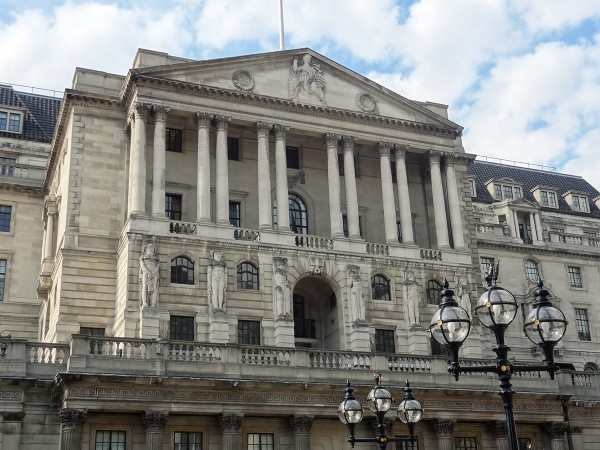 The Bank of England’s monetary policy is aimed at achieving an inflation rate of 2% CPI inflation ‘within a reasonable time period’, typically within 24 months. But speaking in Nottingham in one of the ‘Future Forum‘ events on 14 October, the Bank’s Governor, Mark Carney, said that the Bank would be willing to accept inflation above the target in order to protect growth in the economy.
The Bank of England’s monetary policy is aimed at achieving an inflation rate of 2% CPI inflation ‘within a reasonable time period’, typically within 24 months. But speaking in Nottingham in one of the ‘Future Forum‘ events on 14 October, the Bank’s Governor, Mark Carney, said that the Bank would be willing to accept inflation above the target in order to protect growth in the economy.
“We’re willing to tolerate a bit of an overshoot in inflation over the course of the next few years in order to avoid rising unemployment, to cushion the blow and make sure the economy can adjust as well as possible.”
But why should the Bank be willing to relax its target – a target set by the government? In practice, a temporary rise above 2% can still be consistent with the target if inflation is predicted to return to 2% within ‘a reasonable time period’.
 But if even if the forecast rate of inflation were above 2% in two years’ time, there would still be some logic in the Bank not tightening monetary policy – by raising Bank Rate or ending, or even reversing, quantitative easing. This would be the case when there was, or forecast to be, stagflation, whether actual or as a result of monetary policy.
But if even if the forecast rate of inflation were above 2% in two years’ time, there would still be some logic in the Bank not tightening monetary policy – by raising Bank Rate or ending, or even reversing, quantitative easing. This would be the case when there was, or forecast to be, stagflation, whether actual or as a result of monetary policy.
The aim of an inflation target of 2% is to help create a growth in aggregate demand consistent with the economy operating with a zero output gap: i.e. with no excess or deficient demand. But when inflation is caused by rising costs, such as that caused by a depreciation in the exchange rate, inflation could still rise even though the output gap were negative.
A rise in interest rates in these circumstances could cause the negative output gap to widen. The economy could slip into stagflation: rising prices and falling output. Hopefully, if the exchange rate stopped falling, inflation would fall back once the effects of the lower exchange rate had fed through. But that might take longer than 24 months or a ‘reasonable period of time’.
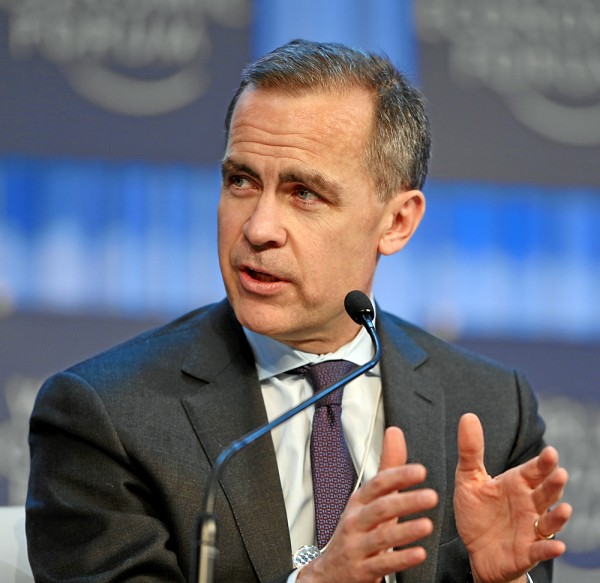 So even if not raising interest rates in a situation of stagflation where the inflation rate is forecast to be above 2% in 24 months’ time is not in the ‘letter’ of the policy, it is within the ‘spirit’.
So even if not raising interest rates in a situation of stagflation where the inflation rate is forecast to be above 2% in 24 months’ time is not in the ‘letter’ of the policy, it is within the ‘spirit’.
But what of exchange rates? Mark Carney also said that “Our job is not to target the exchange rate, our job is to target inflation. But that doesn’t mean we’re indifferent to the level of sterling. It does matter, ultimately, for inflation and over the course of two to three years out. So it matters to the conduct of monetary policy.”
But not tightening monetary policy if inflation is forecast to go above 2% could cause the exchange rate to fall further. It seems as if trying to arrest the fall in sterling and prevent a fall into recession are conflicting aims when the policy instrument for both is the rate of interest.
Articles
BoE’s Carney says not indifferent to sterling level, boosts pound Reuters, Andy Bruce and Peter Hobson (14/10/16)
Bank governor Mark Carney says inflation will rise BBC News, Kamal Ahmed (14/10/16)
Stagflation Risk May Mean Carney Has Little Love for Marmite Bloomberg, Simon Kennedy (14/10/16)
Bank can ‘let inflation go a bit’ to protect economy from Brexit, says Carney – but sterling will be a factor for interest rates This is Money, Adrian Lowery (14/10/16)
UK gilt yields soar on ‘hard Brexit’ and inflation fears Financial Times, Michael Mackenzie and Mehreen Khan (14/10/16)
Brexit latest: Life will ‘get difficult’ for the poor due to inflation says Mark Carney Independent, Ben Chu (14/10/16)
Prices to continue rising, warns Bank of England governor The Guardian, Katie Allen (14/10/16)
Bank of England
Monetary Policy Bank of England
Monetary Policy Framework Bank of England
How does monetary policy work? Bank of England
Future Forum 2016 Bank of England
Questions
- Explain the difference between cost-push and demand-pull inflation.
- If inflation rises as a result of rising costs, what can we say about the rate of increase in these costs? Is it likely that cost-push inflation would persist beyond the effects of a supply-side shock working through the economy?
- Can interest rates be used to control both inflation and the exchange rate? Explain why or why not.
- What is the possible role of fiscal policy in the current situation of a falling exchange rate and rising inflation?
- Why does the Bank of England target the rate of inflation in 24 months’ time and not the rate today? (After all, the Governor has to write a letter to the Chancellor explaining why inflation in any month is more than 1 percentage point above or below the target of 2%.)
- What is meant by a zero output gap? Is this the same as a situation of (a) full employment, (b) operating at full capacity? Explain.
- Why have UK gilt yields soared in the light of a possible ‘hard Brexit’, a falling exchange rate and rising inflation?
 In the last blog post, As UK inflation rises, so real wages begin to fall, we showed how the rise in inflation following the Brexit vote is causing real wages in the UK to fall once more, after a few months of modest rises, which were largely due to very low price inflation. But how does this compare with other OECD countries?
In the last blog post, As UK inflation rises, so real wages begin to fall, we showed how the rise in inflation following the Brexit vote is causing real wages in the UK to fall once more, after a few months of modest rises, which were largely due to very low price inflation. But how does this compare with other OECD countries? Indeed, only in Greece, the UK and Portugal were real wages lower in 2015 than in 2007.
Indeed, only in Greece, the UK and Portugal were real wages lower in 2015 than in 2007.










